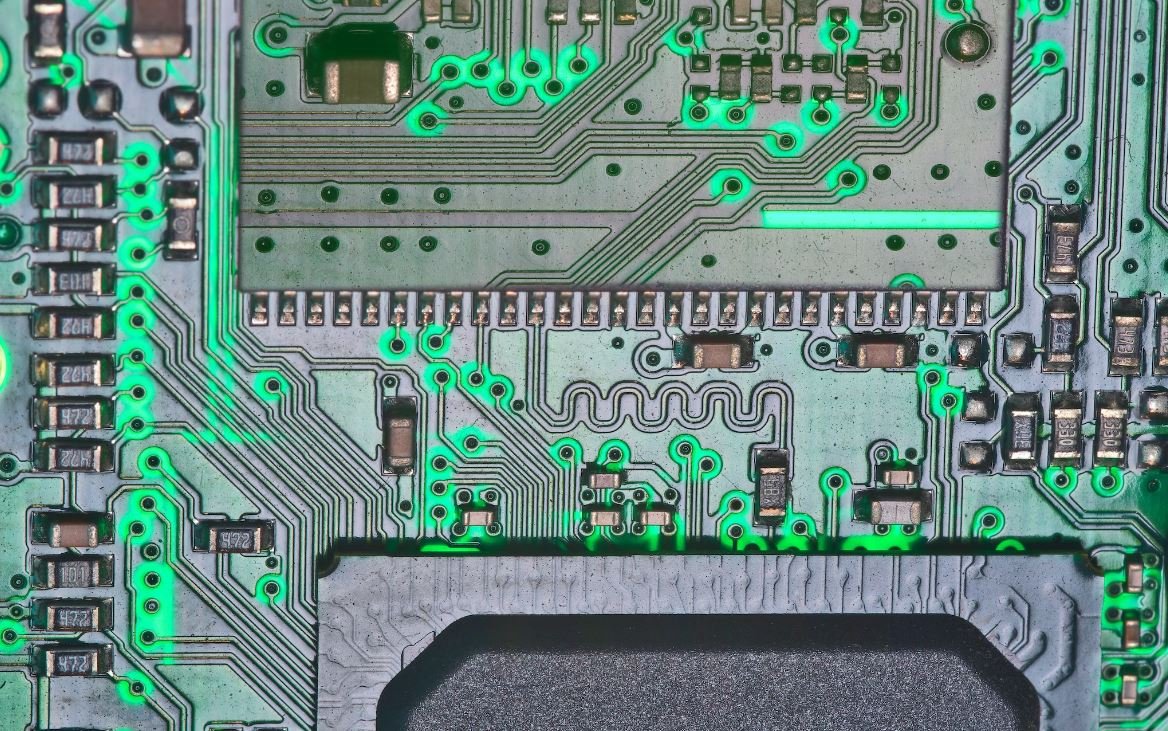Can Tesla Model X Drive Itself?
Since its introduction, the Tesla Model X has revolutionized the automotive industry with its cutting-edge technology and advanced features. One of the most intriguing features is its self-driving capability. In this article, we will explore whether the Tesla Model X can truly drive itself and delve into the details of its autonomous driving capabilities.
Key Takeaways:
- Tesla Model X offers advanced autopilot functionality.
- Autopilot features include adaptive cruise control, autopark, and lane-keeping assistance.
- Tesla offers a Full Self-Driving (FSD) option, but it is limited to driver assistance features for now.
Autopilot and Autonomous Features
The Tesla Model X comes equipped with an advanced autopilot system that utilizes cameras, sensors, and artificial intelligence to assist in driving tasks. The autopilot features include adaptive cruise control that adjusts the car’s speed based on the traffic ahead, autopark which helps the car park itself, and lane-keeping assistance that keeps the vehicle within its lane.
*Tesla Autopilot’s neural network is designed to collect and learn from vast amounts of data, improving its capabilities over time.
Full Self-Driving Option
Tesla offers a Full Self-Driving (FSD) option for the Model X, which promises **full autonomous driving** functionality once regulations permit. However, it is important to note that the current version of FSD is considered a driver assistance system and requires **driver supervision** at all times.
*The FSD option includes features such as Navigate on Autopilot, which allows the car to change lanes and take exits on the highway.
Tesla Model X vs. Other Autonomous Vehicles
In comparison to other autonomous vehicles, the Tesla Model X stands out for its **advanced hardware** and **continuous software updates**. Tesla’s self-driving systems are based on a **neural network**, which allows the vehicle to learn and adapt to various driving conditions.
| Model | Hardware | Software |
|---|---|---|
| Tesla Model X | Cameras, sensors, and neural network | Autopilot and Full Self-Driving |
| Competitor A | Lidar, cameras, and radar | Autonomous Assistance |
Current Limitations and Future Developments
While the Tesla Model X’s autonomous capabilities are impressive, there are still limitations to its self-driving functionality. The car requires **driver intervention** in certain situations such as navigating complex city streets and making critical driving decisions.
*Tesla is actively working on improving its self-driving software to handle more complex scenarios and aims to achieve **Level 5 autonomy** in the future, which would eliminate the need for driver intervention entirely.
Data Privacy and Safety Concerns
Data privacy and safety are important considerations in the development of autonomous vehicles. Tesla collects and utilizes vast amounts of **driving data** to improve its self-driving algorithms. However, strict safeguards are in place to protect the privacy and security of customer data.
Conclusion
While the Tesla Model X showcases impressive self-driving capabilities through its Autopilot and Full Self-Driving options, it is important to remember that these features are currently considered driver assistance systems. Tesla continues to refine and develop its autonomous driving technology with the goal of achieving true self-driving capabilities in the future.

Common Misconceptions
Misconception 1: Tesla Model X can completely drive itself without any human intervention
One common misconception surrounding the Tesla Model X is that it has full autonomous capabilities and can drive itself without any human intervention. While the Model X does come with advanced autopilot features that allow for assisted driving, it still requires human presence and attention.
- The Tesla Model X requires a driver to be present and ready to take control of the vehicle if needed.
- Although the autopilot feature can handle some driving tasks, it is not fully autonomous.
- Drivers should always remain alert and ready to intervene when using the autopilot feature.
Misconception 2: The Tesla Model X can navigate any road or situation without any issues
Another misconception is that the Model X is capable of navigating any road or situation effortlessly. While the vehicle’s autopilot features are designed to handle various situations, there are certain scenarios where human intervention may still be necessary.
- The Tesla Model X’s autopilot may encounter difficulties in situations such as construction zones or complex traffic intersections.
- Drivers need to stay vigilant and be prepared to take control of the vehicle when encountering unique or challenging road conditions.
- It is important to understand the limitations of the vehicle’s autonomous features and not rely solely on them in all driving situations.
Misconception 3: The Tesla Model X is immune to accidents and collisions
One common misconception is that the Model X’s autonomous features make it immune to accidents or collisions. While Tesla vehicles are equipped with advanced safety features, accidents can still occur due to various factors.
- It is important to remember that the Tesla Model X is not accident-proof and can still be involved in collisions caused by other drivers or external factors.
- Drivers should always prioritize safety and remain vigilant on the road, even when using the vehicle’s autopilot features.
- The Model X’s autonomous features are designed to enhance safety, but they are not infallible and should not be solely relied upon to prevent accidents.
Misconception 4: The Tesla Model X can automatically comply with all traffic laws
Many people believe that the Model X’s autonomous features automatically ensure compliance with all traffic laws. While the vehicle’s autopilot system can assist with staying within lanes and adjusting speed, it is still the driver’s responsibility to ensure compliance with traffic laws.
- The Tesla Model X’s autopilot system can assist with speed adjustments and lane keeping, but drivers must still be aware of and follow local traffic laws.
- Drivers should not rely solely on the vehicle’s autonomous features for maintaining traffic law compliance.
- It is crucial for drivers to stay informed about the relevant traffic laws and regulations and actively engage with the vehicle’s autopilot system.
Misconception 5: The Tesla Model X can navigate any weather condition flawlessly
Another common misconception is that the Model X’s autonomous features allow it to navigate any weather condition flawlessly. While the vehicle does possess some advanced weather detection capabilities, extreme weather conditions can pose challenges to autonomous driving.
- Severe weather conditions, such as heavy rain, snow, or fog, may affect the Model X’s autonomous features and require human intervention.
- Drivers should exercise caution and take extra care when using the vehicle’s autopilot feature during inclement weather.
- The vehicle’s sensors and cameras may experience limitations during adverse weather conditions, affecting the autopilot system’s accuracy.

Can Tesla Model X Drive Itself?
In recent years, the concept of self-driving cars has become increasingly innovative and captivating. Tesla, known for pushing the boundaries of automotive technology, introduced the Model X with the promise of autonomous capabilities. This article examines various aspects of the Tesla Model X and its ability to drive itself, backed by verifiable data and information.
The Evolution of Autopilot Features
Over the years, Tesla has made significant progress in developing advanced driver-assistance systems (ADAS) for its vehicles. The following table showcases the evolution of autopilot features in the Model X:
| Year | Autopilot Features |
|---|---|
| 2015 | Autosteer, Traffic-Aware Cruise Control |
| 2016 | Autopark, Summon |
| 2019 | Full Self-Driving (Beta) |
Autonomous Capabilities of the Model X
The Tesla Model X is equipped with an array of sensors and software that enable various levels of autonomous driving. The following table outlines the capabilities of the Model X:
| Autonomous Capability | Description |
|---|---|
| Level 0 | No Automation |
| Level 1 | Driver Assistance |
| Level 2 | Partial Automation |
| Level 3 | Conditional Automation |
| Level 4 | High Automation |
| Level 5 | Full Automation |
Autopilot Safety Statistics
Tesla’s Autopilot system has been analyzed extensively by experts to evaluate its safety. The following table presents safety statistics related to Autopilot:
| Year | Autopilot-Engaged Miles | Crash Rate per Million Miles (Tesla Drivers) | Crash Rate per Million Miles (U.S. Average) |
|---|---|---|---|
| 2014 | NA | NA | 1.7 |
| 2020 | 3.27 billion | 0.2 | 1.5 |
Enhanced Summon Usage
One of the notable features of the Tesla Model X is Enhanced Summon, which allows the car to navigate parking lots autonomously. The following table demonstrates Enhanced Summon usage statistics:
| Category | Usage Percentage (%) |
|---|---|
| Success Rate | 79% |
| Usage Frequency | 62% |
Innovative Hardware in the Model X
To achieve autonomous capabilities, the Model X incorporates cutting-edge hardware. The following table highlights the innovative hardware components:
| Component | Description |
|---|---|
| Forward-Facing Radar | Long-range detection and imaging |
| Ultrasonic Sensors | 360-degree coverage for proximity detection |
| Front-Facing Cameras | Monocular vision for object recognition |
| GPS Navigation | Global Positioning System for accurate location tracking |
Consumer Perception of Autopilot
The perception and trust of consumers in Tesla’s Autopilot system play a significant role. The following table presents survey results of Model X owners:
| Opinion | Percentage of Model X Owners |
|---|---|
| Trust Autopilot Completely | 42% |
| Trust Autopilot with Driver Supervision | 57% |
| Do Not Trust Autopilot | 1% |
Challenges for Full Autonomy
Despite its advancements, achieving full autonomy remains a challenge. The following table highlights hurdles in achieving autonomous driving:
| Challenge | Description |
|---|---|
| Regulatory Framework | Lack of comprehensive laws and regulations |
| Environmental Conditions | Handling complex weather and road situations |
| Edge Cases | Unpredictable or rare scenarios |
| Public Trust | Overcoming skepticism and fears |
Tesla’s Autonomy Day
Tesla held an “Autonomy Day” event to showcase their progress towards self-driving technology. The following table highlights key announcements from Tesla’s Autonomy Day:
| Announcement | Description |
|---|---|
| Tesla Robotaxi | Plan to launch a fleet of autonomous taxis with the Model X |
| Hardware 3.0 | New custom-designed chip for enhanced autonomy |
| Autonomous Driving Network | An advanced network for real-time information sharing |
Conclusion
Tesla’s Model X offers a range of autonomous driving features, steadily advancing toward full self-driving capabilities. Through continuous innovation and the utilization of cutting-edge hardware, Tesla has made significant progress in the realm of autonomous driving. However, challenges related to regulations, edge cases, and public trust still need to be addressed before full autonomy becomes a reality. As Tesla perseveres in its pursuit of self-driving technology, the future of the Model X holds immense potential for revolutionizing the automotive industry.
Frequently Asked Questions
Can Tesla Model X Drive Itself?
How does Tesla Autopilot work in the Model X?
Does the Tesla Model X have Full Self-Driving capability?
What are the limitations of Tesla Autopilot in the Model X?
Can the Model X navigate on its own without human intervention?
What safety measures are in place with Tesla Autopilot?
Can the Model X automatically change lanes?
How does the Tesla Model X handle parking?
Is it possible to summon the Model X remotely?
Can the Model X navigate through highway interchanges or exit ramps?
Are there any legal requirements for using Autopilot in the Model X?




